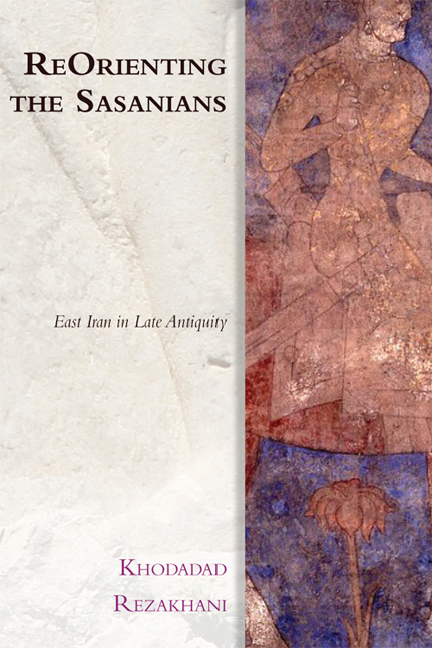Book contents
- Frontmatter
- Contents
- List of Illustrations
- Acknowledgements
- Series Editor's Preface
- Maps
- Preface
- Introduction
- 1 The Sasanians and the Sistanis
- 2 The Kushans and the Sasanians
- 3 The Kushano-Sasanians in East Iran
- 4 The Iranian Huns and the Kidarites
- 5 The Alkhans in the Southern Hindu Kush
- 6 The Hephthalite ‘Empire’ and its Successors
- 7 Sogdiana in the Kidarite and Hephthalite Periods
- 8 The Nēzak and Turk Periods
- 9 Tokharistan and Sogdiana in the Late Sasanian Period
- 10 General Conclusions and Postscript
- 11 Epilogue and Excursus on the Shahnameh
- Bibliography
- Index
1 - The Sasanians and the Sistanis
Published online by Cambridge University Press: 07 December 2017
- Frontmatter
- Contents
- List of Illustrations
- Acknowledgements
- Series Editor's Preface
- Maps
- Preface
- Introduction
- 1 The Sasanians and the Sistanis
- 2 The Kushans and the Sasanians
- 3 The Kushano-Sasanians in East Iran
- 4 The Iranian Huns and the Kidarites
- 5 The Alkhans in the Southern Hindu Kush
- 6 The Hephthalite ‘Empire’ and its Successors
- 7 Sogdiana in the Kidarite and Hephthalite Periods
- 8 The Nēzak and Turk Periods
- 9 Tokharistan and Sogdiana in the Late Sasanian Period
- 10 General Conclusions and Postscript
- 11 Epilogue and Excursus on the Shahnameh
- Bibliography
- Index
Summary
INTRODUCTION
The first encounter of the Sasanians with the east took place in the initial stages of the dynasty's foundations, during Ardashir's eastern campaigns, sometimes after his defeat of Artabanus IV (c. ad 224), the last major Arsacid authority (Daryaee 2009: 3–4; Grabowski 2011: 207–33). Ardashir probably took a northeastern route first (Alram 2007: 227–42), conquering the important town of Marw, which henceforth became the most secure Sasanian base of activities in the northeastern parts of their territories. It was after this success that Ardashir turned his attention further south and headed to the region of Sistan (MP Sīstān, from Sakistan, *Saka-stan, ‘the land of the Sakas’). Various members of the so-called Indo-Parthian dynasty (Fröhlich 2004) had ruled Sistan since the time of Gondophares in the first century ad. However, this Indo-Parthian ‘empire’ was effectively divided, following Gondophares’ own demise, into two parts, with different successors ruling either part and occasionally trying to control the whole domain, as indicated by their coinage. Sistan proper, the former satrapi of Drangiana and the neighbouring Arachosia (to emerge as Zabulistan in the later periods) and the most important western possession of the Indo-Parthian dynasty, eventually fell to a successor, and perhaps a usurper, named Sanabares. It is with the descendants of Sanabares in Sistan that Ardashir first had to compete over control of the eastern flank of his nascent empire.
THE ORIGINS OF THE SASANIANS IN PERSIS
Before describing the encounter between Ardashir and the Indo- Parthians, we must understand the origins of the Sasanians in Persis itself and the importance of the rule of the east in the formation of Ardashir's empire. The most common narratives of the foundation of the Sasanian dynasty provide a semi-legendary background for the Sasanian founder and often highlight certain parts of his career in order to suggest a divine providence for his conquests. This was, in reality, essentially a usurpation of the throne of his father and brother, and ultimately that of the local Persis authorities.
- Type
- Chapter
- Information
- ReOrienting the SasaniansEast Iran in Late Antiquity, pp. 27 - 45Publisher: Edinburgh University PressPrint publication year: 2017



